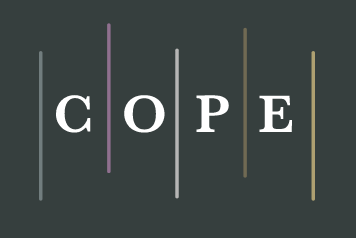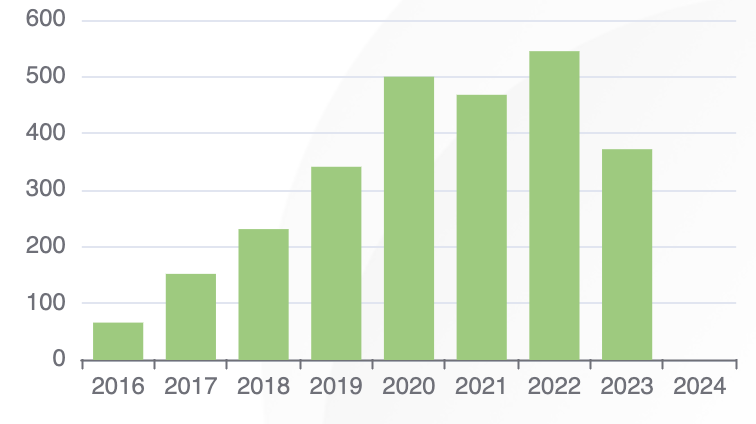Post-Conflict Democratization: A Comparative Case Study of Cambodia and Nigeria’s Experiences
 Abstract views: 490
,
Abstract views: 490
,
 PDF downloads: 260
PDF downloads: 260
Abstract
Religious conflicts occurred in various countries, from Nigeria's 1980 conflict between Islam and Christianity to Cambodia's religious conflict in 1970. This study examines how religion reconstructs democracy following civil wars in Cambodia and Nigeria. Cambodia emphasizes a spiritual approach for conflict-affected communities to eliminate future conflicts, making religion a collective spiritual tool. Nigeria emphasizes an institutionalized approach using mediation and interfaith dialogue, using religion as socio-political mediation. This comparative study examines religion's role in post-conflict democratic reconstruction in both countries. The research analyzes using Most Similar System Design (MSSD) two countries with systemic similarities, including religious-based civil conflict, influential religious actors, and democracy disruptions between 1970 and 2005. Despite similarities, Cambodia and Nigeria used different faith-based peacebuilding strategies. In Cambodia, Buddhist monk Maha Ghosananda adopted a spiritual approach, focusing on healing through rituals like the “Pilgrimage of Truth” to restore trust and values for reconstructing democracy. In Nigeria, religious leaders Imam Muhammad Nurayn Ashafa and Pastor James Movel Wuye used an institutionalized approach, emphasizing mediation and interfaith dialogue for socio-political reconciliation. While Cambodia's approach yielded stronger personal reconciliation, Nigeria’s strategy effectively reduced violence and polarization, establishing deliberative democracy. The study concludes that religious peacebuilding effectiveness depends on context, with the socio-political environment shaping strategies. Quantitative data from V-Dem shows religious actor interventions coincide with improved democratic indicators, highlighting faith-based peacebuilding’s contribution to democratic reconstruction.
Downloads
References
“1 A Moment of Opportunity?: The Promise of Religious Peacebuilding in an Era ofReligious and Ethnic Conflict.” In Religion and Peacebuilding, by David Little and Scott Appleby, 1–23. SUNY Press, 2012. https://doi.org/10.1515/9780791485859-002.
Abdulrahman, I. “Management of Religious Conflict In Nigeria: The Form Of Government Intervention.” Jstor 9 (2001). https://doi.org/DOI:10.4314/ifep.v9i3.23633.
Abdulrahman, I. “Management of Religious Conflict In Nigeria: The Form Of Government Intervention.” Jstor 9 (2001). https://doi.org/DOI:10.4314/ifep.v9i3.23633.
Aboh, Fidelis Isomkwo, Emmanuel Paul Ngele, Emmanuel N Okom, John Augustine Iteh, and James Nwachukwu Eze. “A Review of Traditional Methods of Conflict Resolution from a Nigerian-African-Perspective.” Journal La Sociale 4, no. 4 (November 2023): 193–200. https://doi.org/10.37899/journal-la-sociale.v4i4.878.
Abu-Nimer, Tsjeard S. Bouta Ayse Kadayifci-Orellana Mohammed. Faith-Based Peace-Building: Mapping and Analysis of Christian, Muslim and Multi-Faith Actors. 2005. http://hdl.handle.net/1961/auislandora:31693.
Adamu, Bala, and Ibrahim Musa. “An Analysis of Ethno-Religious Conflict in Kaduna State.” KASHERE JOURNAL OF POLITICS AND INTERNATIONAL RELATIONS 3, no. 1 (2025). https://journals.fukashere.edu.ng/index.php/kjpir/article/view/429.
Ahu Sandal, Nukhet. “Religious Actors as Epistemic Communities in Conflict Transformation: The Cases of South Africa and Northern Ireland.” Review of International Studies 37, no. 3 (July 2011): 929–49. https://doi.org/10.1017/s0260210510001592.
Ayres, Lioness, Karen Kavanaugh, and Kathleen A. Knafl. “Within-Case and Across-Case Approaches to Qualitative Data Analysis.” Qualitative Health Research 13, no. 6 (July 2003): 871–83. https://doi.org/10.1177/1049732303013006008.
bartoli. “The Role of Religion Is the Role of Its Actors.” New Routes: A Journal of Peace Research and Acti 10 (2009). https://shu.elsevierpure.com/en/publications/the-role-of-religion-is-the-role-of-its-actors.
Caramani, Daniele, ed. Comparative Politics. Sixth edition. Oxford, United Kingdom ; New York: Oxford University Press, 2023. https://global.oup.com/ushe/product/comparative-politics-9780192846051?cc=id&lang=en&.
Carlson and Appleby. “The Ambivalence of the Sacred: Religion, Violence, and Reconciliation.” Journal of Law and Religion, n.d.
Coward, Harold G., and Gordon S. Smith, eds. Religion and Peacebuilding. SUNY Series in Religious Studies. Albany: State University of New York Press, 2004.
Czada, Roland. Religions and World Peace. Edited by Roland Czada, Thomas Held, and Markus Weingardt. Nomos, 2012. https://doi.org/10.5771/9783845238890.
Ghanbari, Mohsen, and Shah Ali. “Faith-Based Peacebuilding through Intercultural Dialogue.” Kom : Casopis Za Religijske Nauke 7, no. 3 (2018): 69–87. https://doi.org/10.5937/kom1803069g.
Haynes, Jeffrey. “Conflict, Conflict Resolution and Peace-Building: The Role of Religion in Mozambique, Nigeria and Cambodia.” Commonwealth and Comparative Politics 47, no. 1 (2009): 52–75. https://doi.org/10.1080/14662040802659033.
———. “God on Our Side. Religion in International Affairs, by Shireen T. Hunter.” Democratization 25, no. 3 (April 2018): 571–72. https://doi.org/10.1080/13510347.2016.1268124.
———. “Islamist Parties and Political Normalization in the Muslim World.” Democratization 22, no. 1 (January 2015): 201–2. https://doi.org/10.1080/13510347.2014.977264.
———. “Religion and Democratisation: What Do We Now Know?” Journal of Religious and Political Practice 2, no. 2 (May 2016): 267–72. https://doi.org/10.1080/20566093.2016.1181385.
———. Religion and Development. Palgrave Macmillan UK, 2007. https://doi.org/10.1057/9780230589568.
———. Religious Transnational Actors and Soft Power. Routledge, 2016. https://doi.org/10.4324/9781315605142.
Hertog, Katrien. The Complex Reality of Religious Peacebuilding: Conceptual Contributions and Critical Analysis. Lexington Books, 2010. https://doi.org/10.5771/9780739139516.
Kiernan, Ben. “Introduction: Conflict in Cambodia, 1945-2002.” Critical Asian Studies 34, no. 4 (December 2002): 483–95. https://doi.org/10.1080/1467271022000035893.
———. “Introduction: Conflict in Cambodia, 1945-2002.” Critical Asian Studies 34, no. 4 (December 2002): 483–95. https://doi.org/10.1080/1467271022000035893.
Kwuelum, Charles. “Navigating the Complexities of Inter-Religious Peacebuilding: Implications for Theory and Practice.” Religions 15, no. 10 (October 2024): 1201. https://doi.org/10.3390/rel15101201.
Landman, Todd. Issues and Methods in Comparative Politics: An Introduction. 3rd ed. Milton Park, Abingdon, Oxon ; New York: Routledge, 2008.
Lijphart. “Comparative Politics and Comparative Method.” Jstor, no. 3 (September 1971). http://www.jstor.org/about/term.html.
Marston, John A., and Elizabeth Guthrie. History, Buddhism, and New Religious Movements in Cambodia. University of Hawai’i Press, 2004. https://www.jstor.org/stable/j.ctvvn02z.
Ogbaki, Emmanuel Peter. “Conflicts In Southern Kaduna: Causes And Strategies For Resolution.” In JORAS, 7:12–28. 2017. https://www.acjol.org/index.php/joras/article/view/2004.
Omar, Rashied. The Oxford Handbook of RELIGION, CONFLICT, AND PEACEBUILDING. n.d. https://www.researchgate.net/publication/358519171.
———. The Oxford Handbook of RELIGION, CONFLICT, AND PEACEBUILDING. n.d. https://www.researchgate.net/publication/358519171.
Onwuegbuzie, Anthony J., and Rebecca K. Weinbaum. “Mapping Miles and Huberman’s Within-Case and Cross-Case Analysis Methods onto the Literature Review Process.” Journal of Educational Issues 2, no. 1 (May 2016): 265. https://doi.org/10.5296/jei.v2i1.9217.
Paffenholz, Thania. “International Peacebuilding Goes Local: Analysing Lederach’s Conflict Transformation Theory and Its Ambivalent Encounter with 20 Years of Practice.” Peacebuilding 2, no. 1 (January 2014): 11–27. https://doi.org/10.1080/21647259.2013.783257.
“Religious Peacebuilding.” In Routledge Handbook of Religion and Politics, 3rd ed., by Atalia Omer and Joram Tarusarira, 423–39. London: Routledge, 2023. https://doi.org/10.4324/9781003247265-34.
Salami, Farouk, and Gbenemene Kpae. “EXAMINATION OF TRADITIONAL NIGERIAN CONFLICT RESOLUTION MECHANISM AND MODERN LEGAL SYSTEM OF CONFLICT RESOLUTION.” Journal of Advance Research in Social Science and Humanities (ISSN:2208-2387) 9, no. 8 (August 2023): 25–34. https://doi.org/10.53555/nnssh.v9i8.1731.
Salvatore Nicosia, Paolo. “Faith-Based Peacebuilding: Insights from the Three Main Monotheisms.” ATHENS JOURNAL OF SOCIAL SCIENCES 4, no. 1 (December 2016): 7–24. https://doi.org/10.30958/ajss.4-1-1.
Sarmento, Rui, and Vera Costa. Comparative Approaches to Using R and Python for Statistical Data Analysis. IGI Global, 2017. https://doi.org/10.4018/978-1-68318-016-6.
Sarun, Ven Pov. วารสารวิ ชาการพระพุ ทธศาสนาเขตลุ มแม น้ ำโขง ป ที ่ 2 ฉบั บที ่ 2 ประจำเดื อนกรกฎาคม-ธั นวาคม 2562 43 Ven. Maha Ghosananda’s Contributions to Social Well-Being in Cambodia. n.d. http://ojs.mbu.ac.th/index.php/bmrj.
Shaw, Timothy M. “A Problematic Power: The Debate about Nigerian Foreign Policy in the 1980s.” Millennium: Journal of International Studies 12, no. 2 (June 1983): 127–48. https://doi.org/10.1177/03058298830120020501.
Stuart-Fox, Martin. Buddhism and Politics in Laos, Cambodia, Myanmar and Thailand. 2006. https://martinstuartfox.com/wp-content/uploads/2023/03/buddhism_and_politics_in_southeast_asia.pdf.
“Within-Case Qualitative Analysis.” In Managing Employee Well-Being and Resilience for Innovation, by Vidya S. Athota and Ashish Malik, 95–174. Cham: Springer International Publishing, 2019. https://doi.org/10.1007/978-3-030-06188-3_5.
The journal operates an Open Access policy under a Creative Commons Non-Commercial Share-Alike license. Authors who publish with this journal agree to the following terms:
- Authors retain copyright and grant the journal right of first publication with the work simultaneously licensed under a Creative Commons Attribution License that allows others to share the work with an acknowledgement of the work's authorship and initial publication in this journal.
- Authors are able to enter into separate, additional contractual arrangements for the non-exclusive distribution of the journal's published version of the work (e.g., post it to an institutional repository or publish it in a book), with an acknowledgement of its initial publication in this journal.
- Authors are permitted and encouraged to post their work online (e.g., in institutional repositories or on their website) prior to and during the submission process, as it can lead to productive exchanges, as well as earlier and greater citation of published work.



















